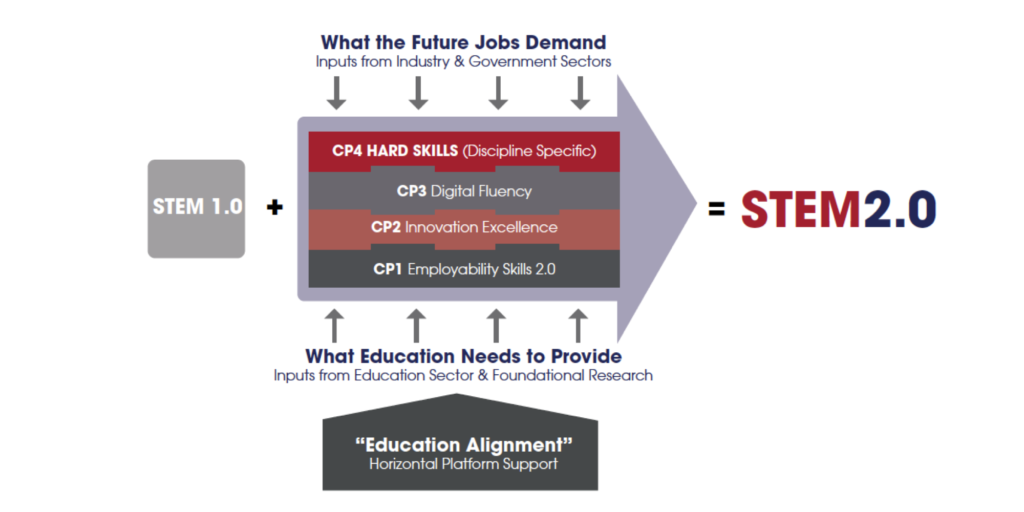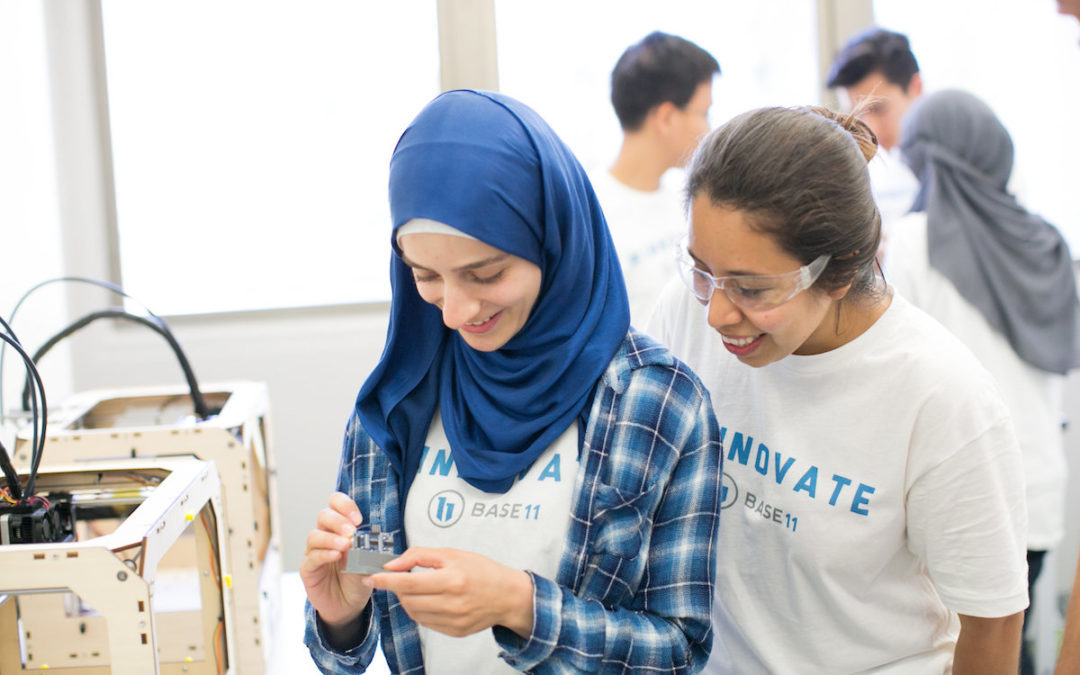“[Science] is more than a school subject, or the periodic table, or the properties of waves. It is an approach to the world, a critical way to understand and explore and engage with the world, and then have the capacity to change that world…”
— President Barack Obama, March 23, 2015
Education and business leaders agree that STEM skills (science, technology, engineering and math), though critical, are by themselves insufficient for success in the 21st century workplace.
“When it comes to the types of skills and knowledge that employers feel are most important to workplace success, large majorities of employers do NOT feel that recent college graduates are well prepared,” according to a report from the American Association of Colleges and Universities.
According to the AACU’s survey, only quarter or fewer of employers say that students are well prepared to analyze and solve complex problems, be innovative and creative, or apply their knowledge and skills to the real world.
STEM 2.0 is an initiative that aims to bridge the gap between the STEM skills that students currently have upon graduation, and the skills that they actually need to excel in careers today. More than 30 leaders from industry, government, education and nonprofit sectors comprise STEMconnector’s Innovation Task Force that developed the STEM 2.0 framework, and continue advancing it.
“STEM 1.0 rightly focused on strengthening the STEM education system and inculcating in young people STEM skills,” said Heidi Kleinbach-Sautre, Ph.D., chair of the task force and Senior Vice President of PepsiCo’s Global Foods R&D. “The next phase, STEM 2.0 … marks a crucial turning point in how schools and employers are collaborating to make the transition from classroom to career seamless.” (Read the full interview here: http://www.pepsico.com/live/story/the-case-for-stem-2.0.)

Courtesy of STEMconnector
What are these STEM 2.0 skills that are required in future jobs, and need to be strengthened in pre-career, educational settings? Here’s what you need to know about the four capabilities that have been identified as essential to STEM career success:
- Employability Skills 2.0. What many refer to as “soft skills,” these are the set of interpersonal skills that include leadership capacity, business acumen, the art of persuasion, and the ability to communicate and collaborate in complex, cross-functional, global teams. “Areas such as complex problem solving, collaboration with distributed/virtual teams, creativity and imagination, and sophisticated communication skills come to the fore,” said Al Bunshaft, senior vice president at Dassault Systemes Americas Corporation in STEM 2.0: An imperative for our future workforce.
- Innovation Excellence. Today’s businesses rely on a constant stream of innovation. This is not the fabled model of a lone inventor, but rather the carefully developed ability to continually contribute to teams and processes that identify problems and develop new, innovative solutions. This reflects “a broad consensus that Innovation Excellence is rapidly transforming from an art to a disciplined science with a well-defined strategy and process,” according to PepsiCo’s Kleinbach-Sautre and Mitzi M. Montoya, Ph.D., Vice of Arizona State University the report.
- Digital Fluency. Everything from the way to communicate with loved ones to the way we handle our personal banking has changed in the last generation thanks to the technology revolution. And the changes will only continue. Digital fluency represents “an evolving aptitude that empowers the individual to effectively and ethically interpret information, discover meaning, design content, construct knowledge, and communicate ideas in a digitally connected world,” according to Boise State University’s Mobile Learning Initiative. This includes the ability to apply traditional STEM skills to solve complex problems in other fields – for example, to use math skills to develop models that predict consumer behavior.
- Hard Skills. These are the discipline-specific skills necessary to succeed in a specific STEM field, be it agriculture or information technology.
“For STEM 2.0 to succeed, the gap between the often binary worlds of ‘school’ and ‘work’ must be closed,” says Kleinbach-Sautre, who goes on to describe the often difficult transition from college to the workplace, faced by even those students who excelled in STEM.
STEM 2.0 movement does not seek to reform the education system, but to expand existing programs and improve them with input and insights from employers. This offers opportunities for greater collaboration between colleges and employers to prepare a new generation of STEM innovators.
“Forward-thinking college leaders are forging new pathways and partnerships with employers to the benefit of students, their institutions, and the businesses community,” says Landon Taylor, CEO of the nonprofit STEM accelerator Base 11, which is a STEMconnector partner. “Working together we can achieve our ultimate goal of seeing the next generation succeed and excel as STEM innovators.”
Read the full report at from STEMconnector’s Innovation Task Force, STEM 2.0: An imperative for our future workforce.

